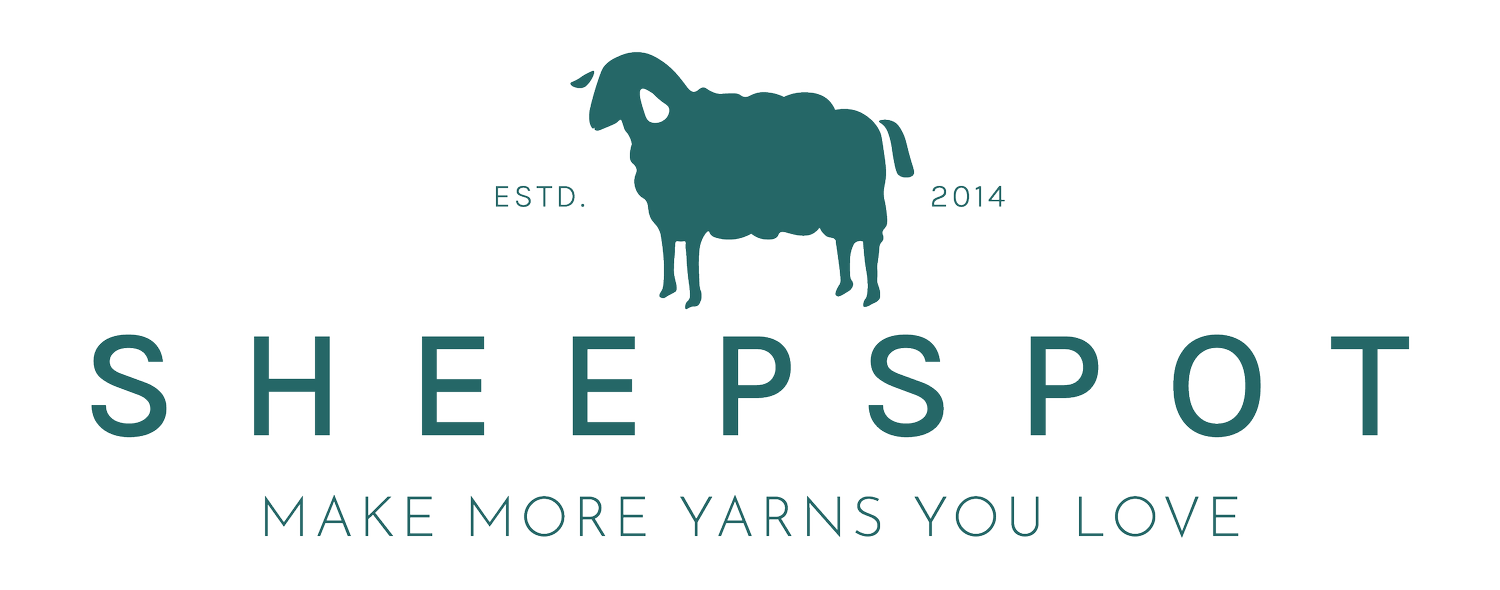Script for
Episode 140:
My Favorite Drop Spindle for Beginners
Curious about spindle spinning but unsure which spindle to start with? I got you, boo! Or are you an accomplished drop spindler who wants to teach a friend to spin and needs a great, inexpensive spindle to teach with? I got you, too!
Hello there, darling Sheepspotter! Welcome to Episode 140 of The Sheepspot Podcast. I'm Sasha, and my job is to help you make more yarns you love. In today's episode, I'll share my favorite drop spindle for beginners.
There are lots of spindle makers whose work I love. I have lots of Ed Jenkins' Turkish spindles. I love spindles from Cascade spindle company. And I own and love lots of Jonathan Bosworth's spindles. But in my last few years of university teaching I created a course called Texts and Textiles, on cloth as a communications medium. We read a lot of textile history, studied fiber artists like Faith Ringgold and Barb Hunt, and students learned to spin on a drop spindle, to do some simple weaving, and to knit; their final project was to create cloth that communicated an idea.
My dean generously agreed to foot the bill for the equipment, so I needed some inexpensive spindles for teaching. And I turned to my absolute favorite spindle for beginners, the Bare Bones spindle from Elizabeth Dailey at Greensleeves Spindles.
Most of the inexpensive spindles marketed for beginners are really heavy. The Ashford Student Spindle and the Louet top whorl are about 2.7 ounces (about 76 grams); The Kromski and the Ashford Classic are 3 ounces (85 grams). IMHO that's too heavy. I learned with, and prefer to teach with, something lighter, in the 1.4-1.7 ounce range (40-48 grams) Enter the Bare Bones, which costs a mere $15 USD and spins like a dream.
Here's what Elizabeth says about this spindle on her website: "With our Bare Bones spindle we wanted to fill the niche for an affordable spindle that can be used as a teaching tool or for a beginner's first spindle. Frequently at shows and festivals a young customer will want a spindle but the parent is reluctant to invest a large sum on a tool that may never be used."
"We had three very important criteria for this spindle," she goes on: "It had to look attractive, be perfectly balanced with a slow sustained spin, and stay affordable. We used premium maple and give it just enough turning to maintain a good spin, therefore we cut out the use of an expensive wood and spend less time on production."
When I was vending at fiber festivals I tried always to have a supply of Bare Bones (and its little sister, the Bare Bonesie) with me. I would spin on one during lulls, and I sold lots to people who saw me spinning, got curious, and wanted to try it themselves. I like to think I created a few spinners that way.
In sum, if you're looking for an inexpensive spindle for learning or teaching that's well-balanced, has a good spin time, and is beautifully made, I can't recommend the Bare Bones more highly. And while you're on her website, check out her other spindles as well. I used to carry them in my shop, I've spun on many, and I love them.
If you're a spindle spinner what did you learn with? I would love to know! There's a dedicated discussion thread in The Flock where you can tell me about your first spindle. The link is in the show notes for this episode, which you'll find right inside your podcast app. So just open up the description for this episode, click the link, and you'll be taken right to the thread.
Darling Sheepspotter, that's it for me this week. Thank you so much for listening. I'll be back next week with my system for keeping track of my spindles and a free PDF that will allow you to do the same. You don't want to miss it. Until then, grab a spindle and spin something! I know it will do you good.

